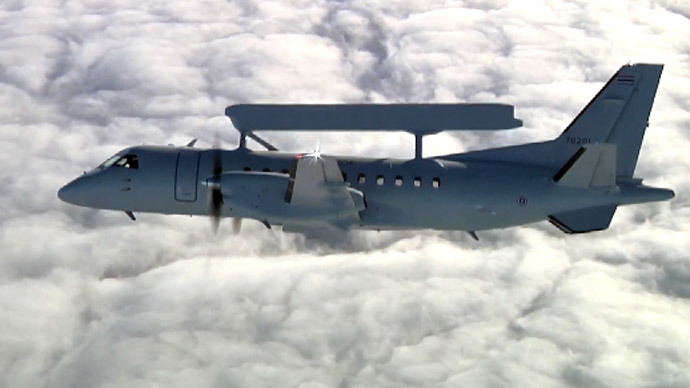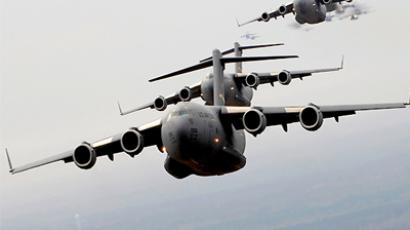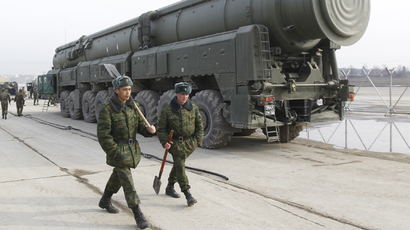US, Germany inspectors to fly over Russia amid Ukraine tensions

American and German inspectors will make observation flights over Russia and Belarus within the framework of the international treaty on Open Skies. The mission is set to verify the true position of Russian troops and military equipment.
Starting from March 17, military inspectors from the United States and Germany will perform flights over European Russia and Belarus to check the real whereabouts of Russian troops following accusations from Ukraine that Russia is consolidating military forces close to its borders. The inspection will continue through March 21.
“The flights will be performed on the Swedish observation plane SAAB-340,” head of the National Nuclear Threat Reduction Center, Sergey Ryzhkov, told Itar-Tass.
Ryzhkov specified that the flights will be performed on agreed routes only and that representatives of the Russian and Belarus military will be present onboard to ensure that the observation equipment on board is used strictly in accordance with the treaty’s provisions and that the flight adheres to coordinated parameters.
The SAAB-340 twin-engine aircraft to be used in the inspection is equipped with aerial photographic cameras and is not capable of carrying weapons.
This international mission is the third one starting from the beginning of March seeking to verify the current location of Russian army units and military equipment.
The first mission was performed on March 3-8 by American and French military inspectors. On March 12, Russia gave a positive reply to Ukraine and allowed Kiev to perform an inspection flight to allay fears about the impending invasion of the Russian army on the Crimea peninsula.
On Monday, Russia announced its readiness to let Ukraine use a Russian helicopter to inspect the Kursk and Belgorod regions close to the Russian-Ukrainian border.
In the course of the inspection, the Ukrainian representatives will be given an opportunity to inspect the specified area using a helicopter provided by the Russian side to make sure that “no military activity threatening Ukraine, so actively discussed in Ukrainian and Western media lately, is underway there” Russia’s deputy Defense Minister, Anatoly Antonov, told journalists.
Russian inspectors are also making observation flights this week over NATO member Spain, where the US recently deployed its Aegis missile destroyer. The inspection started March 16 and will last until Saturday. A Russian military delegation flying on an Antonov 30B aircraft is planning to make up to 1,800-kilometer flights over Spain from Getafe air base near the capital, Madrid. Spanish officers are also present onboard and the flights are performed on agreed routes only. Like the observation planes in Russia, the Antonov 30B twin-engine surveillance aircraft carries no weapons onboard.

The Treaty on Open Skies was signed in 1992 and unites 34 countries. The treaty allows observation flights over Canada, the US, Russia and the majority of European states. The primary aim of the treaty is to ensure transparency in arms control and the settlement of crisis situations within the framework of the Organization for Security and Co-operation in Europe (OSCE) and other international organizations.













